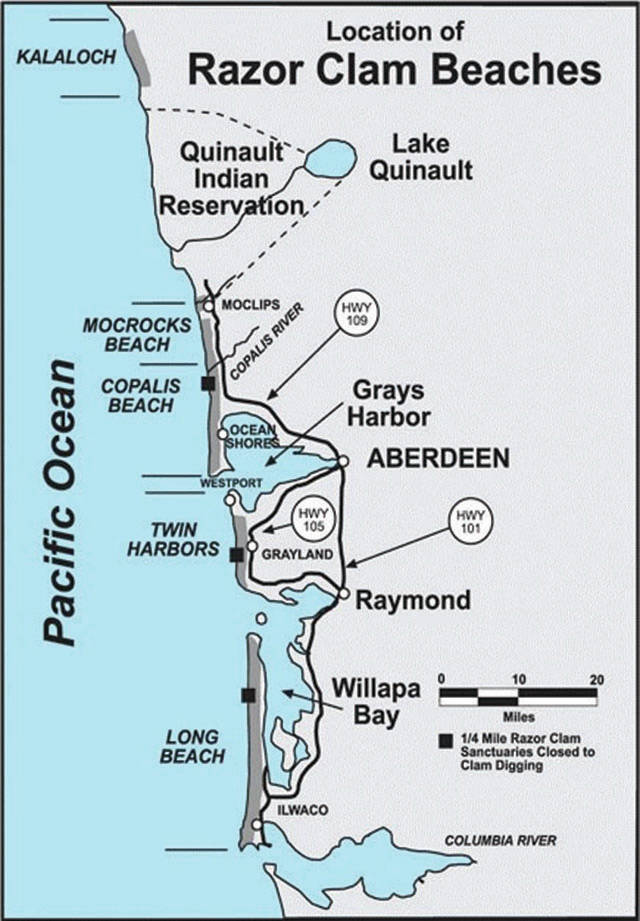State shellfish managers have canceled the first two days — April 24 and 25 — of a tentatively planned eight-day razor clam dig due to rising marine toxin levels.
The Washington Department of Fish and Wildlife will announce next week whether the rest of the dig, now scheduled to begin April 26, will go forward as planned.
Recent tests have found toxin levels at all ocean beaches meet health standards, but the Washington Department of Health has asked for one more test to be sure, said Dan Ayres, state coastal shellfish manager.
“In the last few days, we’ve seen increasing levels of the algae that can cause domoic acid in ocean water,” Ayres said. “We just want to make sure razor clams are safe to eat before giving the green light on this dig.”
The proposed dig, along with morning low tides and beaches, is:
April 26, Wednesday, 7:09 a.m.; -1.1 feet; Twin Harbors, Long Beach
April 27, Thursday, 7:55 a.m.; -1.5 feet; Twin Harbors, Mocrocks, Long Beach
April 28, Friday, 8:42 a.m.; -1.8 feet, Twin Harbors, Copalis, Long Beach
April 29, Saturday, 9:32 a.m.; -1.7 feet; Twin Harbors, Mocrocks, Long Beach
April 30, Sunday, 10:24 a.m.; -1.3 feet; Twin Harbors, Copalis, Long Beach
May 1, Monday, 11:20 a.m.; -0.8 feet; Long Beach
Domoic acid, a natural toxin produced by certain types of marine algae, can be harmful or even fatal if consumed in sufficient quantities. The toxin has disrupted razor clam digs along Washington’s coast over the past two years.
More information about domoic acid can be found at http://wdfw.wa.gov/fishing/shellfish/razorclams/domoic_acid.html. The department will announce the results of the upcoming toxin test early next week at http://wdfw.wa.gov/fishing/shellfish/razorclams/current.html.
All diggers age 15 or older must have an applicable 2017-18 fishing license to harvest razor clams on any beach. Licenses, ranging from a three-day razor clam license to an annual combination fishing license, are available online and from license vendors around the state.



